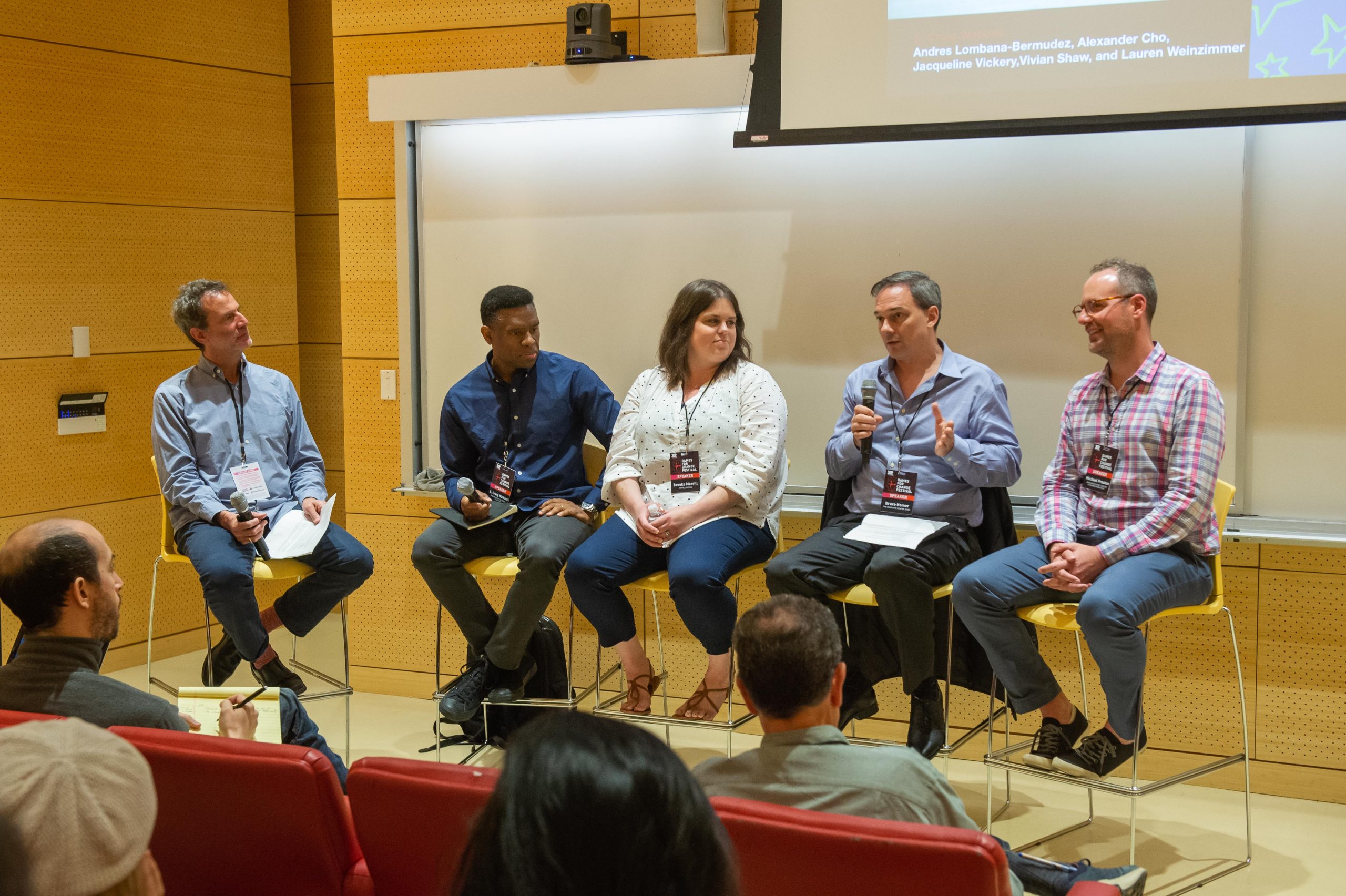Before the Future of Childhood: Immersive Media and Child Development salon took place in November 2018, we invited experts to share their visions about the ways VR and AR might impact childhood 10 years from now. This essay from Dr. Michael Rich, founder and director of the Center on Media and Child Health, looks at some of the exciting possibilities that immersive media hold for children —if it is designed wisely.

Virtual reality (VR) is an oxymoron. And it functions as one, presenting both potential and perils for childhood. The tech industry is betting big on VR and its close relative, augmented reality (AR), predicting that by 2025, VR/AR will command $11.6 billion in video gaming, $3.2 billion in screen entertainment, and $7 million in education (likely an underestimation). By 2022, it is estimated that more than 100 million VR/AR headsets or glasses will be in use.
What does this mean for children? Can VR/AR expand the world of childhood by providing near-infinite information and (virtual) experience? Or will it implode human society, with individuals retreating into unique, curated experiences in their own heads? Will we develop into what Francis Coppola predicted in a conversation with Akira Kurosawa in 1979, a loosely connected mesh of disembodied minds, each telling our own stories, writing our own music, and making our own movies? Any and all of these are possible.
Play is the work of childhood and toys and games are where much VR/AR innovation is happening. But we cannot make the glib assumption that kids will love VR/AR toys, games, and education long enough to benefit from it. If VR/AR does not provide a sustaining interest, children will move to the next bright, shiny thing once the novelty wears off. (Remember Pokémon Go?) Stimulus provided by VR requires significant cognitive processing to synthesize and integrate, with a particularly heavy load on the executive functions of the prefrontal cortex. “Brain overload,” especially acute in children whose prefrontal cortices will not complete development until their mid- to late 20s, is the reason why 3D movies have (repeatedly) been hugely popular, then faded almost as rapidly. AR, especially when built into glasses, will need to solve the “creepy” sense of users behaving like zombies because they are rapidly toggling between virtual and physical worlds. (Remember Google Glass?)
Developers speak glowingly of VR/AR creating immersive, three-dimensional experiences at the computer-human interface, improving digital literacy, communication, collaboration, creativity, and problem-solving. The goal is to take advantage of children’s engagement and facility with interactive media to reinforce enjoyment and confidence in learning, building the “twenty-first century skills” necessary to move beyond receiving information to synthesizing, integrating, and transforming it. However, many of these theoretical potentials have yet to be realized, especially for children whose brains have not yet developed the complexity necessary to take advantage of them. This raises the concern that children’s brains, developing in a VR/AR environment where anything is possible and pre-processed information and experiences are delivered on demand, will be irreversibly altered toward the entitled, incurious, and passive.
In designing VR/AR devices and applications for children, it is critical to keep in mind the active and inquisitive nature of children, the key developmental tasks of each age and stage, and the profound influence of environmental stimuli and challenges on their physical, mental, and social development and health. To be most effective, VR/AR must be designed to respect and promote a rich and diverse menu of childhood experience rather than replace them with attenuated analogs. Children are exquisite sensors of the physical, social, and emotional. Regardless of the visual resolution and audio fidelity, VR/AR cannot recreate the feel of an orchard breeze, the smell of fertile soil, or the crisp, juicy crunch of an apple fresh off the tree. Artificial intelligence cannot approach your mother’s loving smile, the warmth of her lap, or the safety of her embrace. Used mindfully, in focused and directed ways that optimize its capabilities as a tool, VR/AR can be designed to springboard children’s engagement with the physical world with imagination and playfulness, to connect with others in deep and authentic ways, and to approach problems with a critical mind, a creative spirit, and an empathetic heart.
—-
 Michael Rich, MD, MPH, is the founder and director of the Center on Media and Child Health, an academic center of excellence at Boston Children’s Hospital dedicated to investigating, translating, and innovating with media to optimize the physical, mental, academic and social-emotional health and development of children and adolescents. Dr. Rich advises pediatricians, educators and parents on how to optimize child development in the Digital Age at askthemediatrician.org.
Michael Rich, MD, MPH, is the founder and director of the Center on Media and Child Health, an academic center of excellence at Boston Children’s Hospital dedicated to investigating, translating, and innovating with media to optimize the physical, mental, academic and social-emotional health and development of children and adolescents. Dr. Rich advises pediatricians, educators and parents on how to optimize child development in the Digital Age at askthemediatrician.org.




